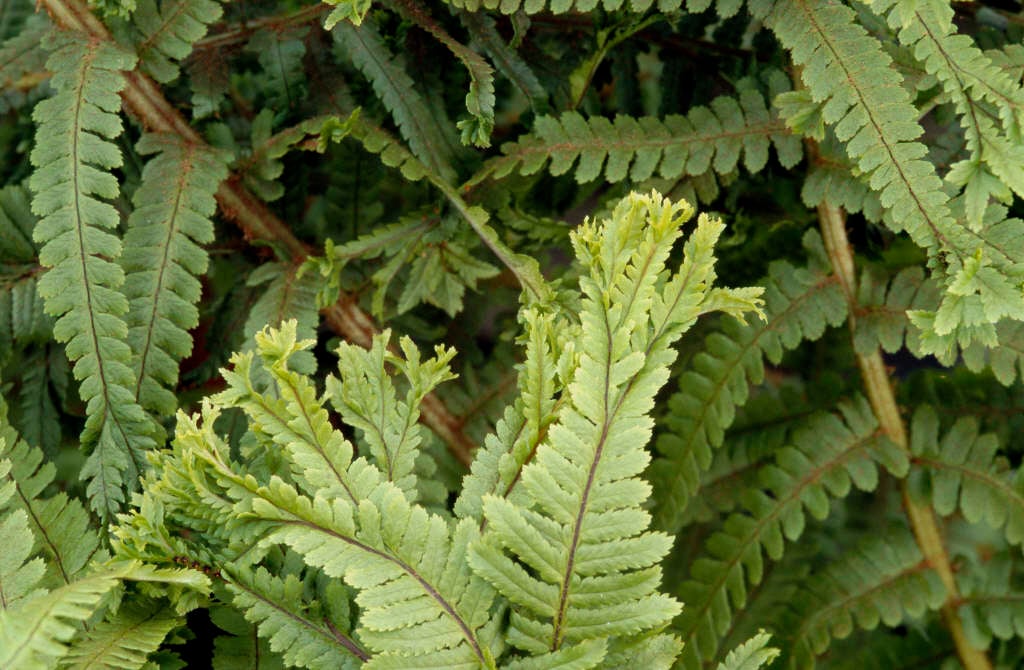Dryopteris filix-mas 'Grandiceps Wills'
male fern 'Grandiceps Wills'
A robust semi-evergreen fern forming a mass of rosettes of arching, lance-shaped, bipinnatifid fronds with large branched terminal crests and small crests at the tips of the pinnae

Buy this plant
Size
Ultimate height
0.5–1 metresTime to ultimate height
2–5 yearsUltimate spread
0.5–1 metresGrowing conditions
Moisture
Moist but well–drained, Well–drainedpH
Acid, Alkaline, NeutralColour & scent
| Stem | Flower | Foliage | Fruit | |
| Spring | Green | |||
|---|---|---|---|---|
| Summer | Green | |||
| Autumn | Green | |||
| Winter | Green |
Position
- Full shade
- Partial shade
Aspect
North–facing or West–facing or East–facing
Exposure
Sheltered Hardiness
H7Botanical details
- Family
- Dryopteridaceae
- Native to GB / Ireland
- No
- Foliage
- Semi evergreen
- Habit
- Bushy
- Genus
Dryopteris can be deciduous, semi-evergreen or evergreen ferns, with stout, erect or decumbent rhizomes and shuttlecock-like rosettes of lance-shaped to ovate, pinnately divided fronds
- Name status
Accepted
How to grow
Cultivation
Grow in moist, humus-rich soil in partial shade with shelter; tolerant of more sun and wind than other species. See how to grow ferns for further advice
Propagation
Propagate by sowing spores as soon as ripe or by division in spring
Suggested planting locations and garden types
- City and courtyard gardens
- Cottage and informal garden
- Flower borders and beds
- Underplanting of roses and shrubs
Pruning
Dead or damaged fronds may be removed as necessary
Pests
Generally pest-free
Diseases
Generally disease-free but moth larvae may feed on spores
Get involved
The RHS is the UK’s gardening charity, helping people and plants to grow - nurturing a healthier, happier world, one person and one plant at a time.